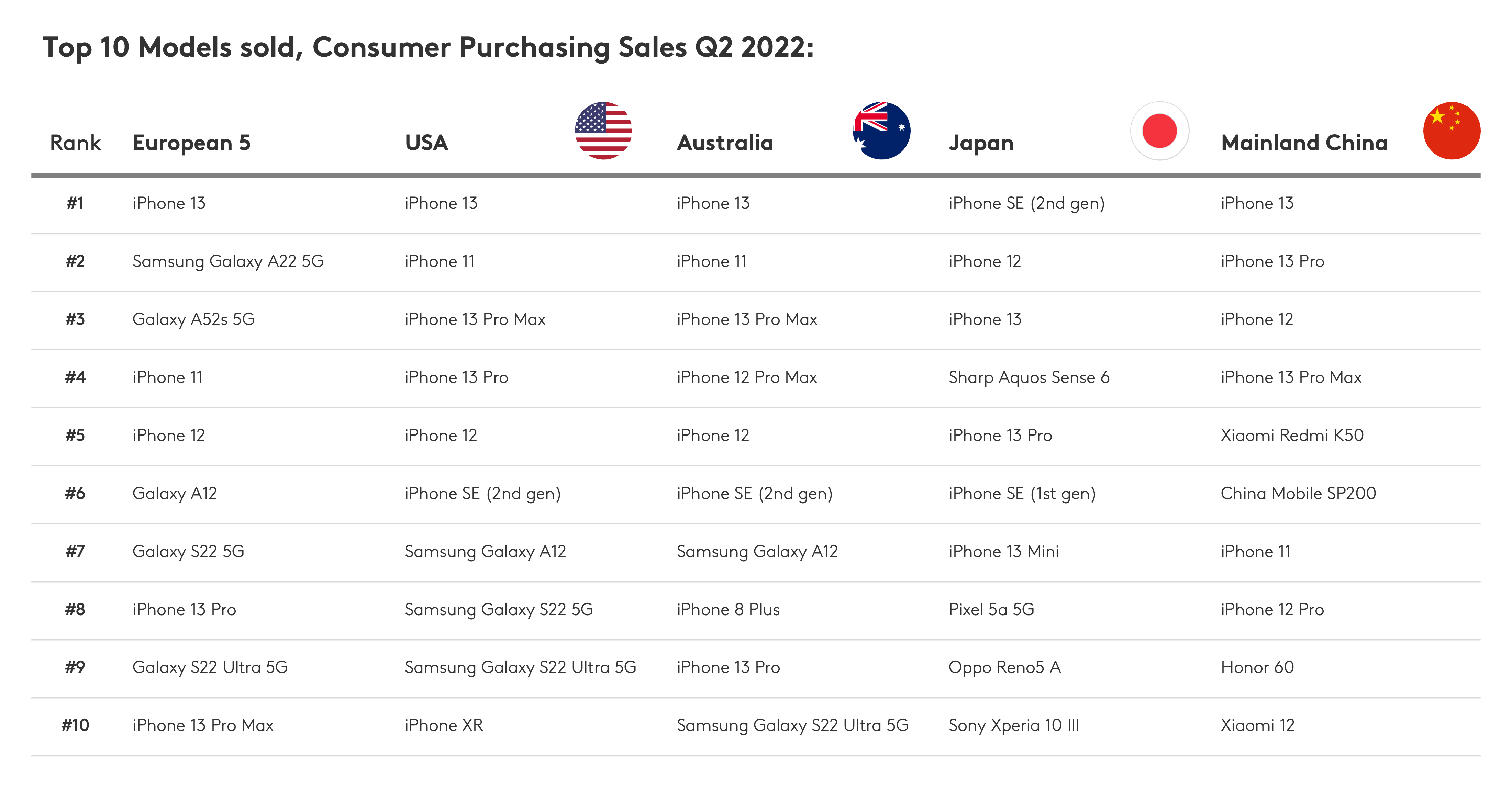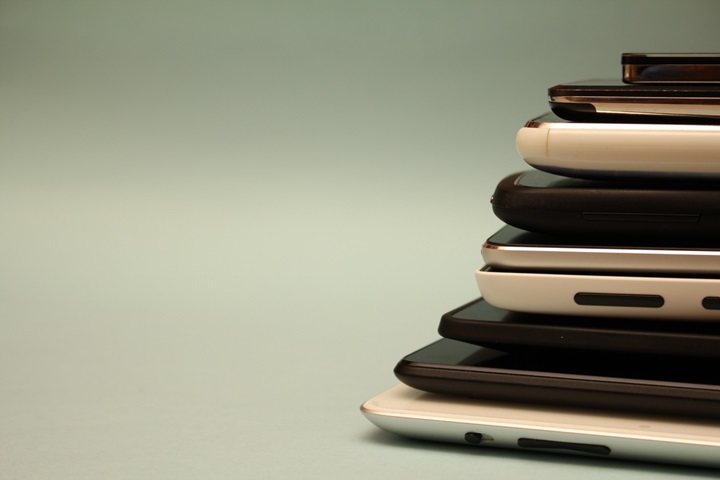Smartphone OS data for the second quarter of 2022 reveal iOS year-on-year share growth in European 5 (France, Germany, Italy, Spain and Great Britain), the U.S., Mainland China, Australia and Japan. Growth is particularly strong in France, Spain, and Mainland China, up by five percentage points year-on-year in each market.
Apple’s iPhone 13 series continues to attract buyers with at least three models from the line up featuring in top 10 sold in the European 5, the U.S., Mainland China, Australia and Japan. Samsung’s strong performance is driven by sales of the Galaxy S22 series; Galaxy S22 5G and Galaxy S22 Ultra 5G landing in the top 10 models sold in European 5, the U.S. and Australia. Samsung’s strong performance in European 5 is also supported by sales of lower tier models Galaxy A52s 5G and Galaxy A22 5G, with the A22 5G the number one device sold in France, Germany, and Spain.
Top 10 models sold, consumer purchasing sales Q2 2022

Despite Android performance decline, Samsung’s performance year-on-year in European 5 is growing; with strong share growth in Germany, Spain and Great Britain. Samsung sales share is also up in the U.S. by four percentage points year-on-year, and holds steady in Japan and Mainland China. Meanwhile, Chinese brands; Huawei and Xiaomi have struggled to hold on to sales share. Huawei continues to experience losses in all European 5 markets, as well as in China. Xiaomi, while experiencing growth in France, and holding stable in Great Britain, Japan, and Australia, share losses in Italy, and Spain exceeded six percentage points, and was down two percentage points in Germany. While there’s still noise and curiosities around foldables as an innovation, sales pick-up has yet to demonstrate whether consumers will demand this form factor as supply increases with more original equipment manufacturers (OEM) launching into this current niche.
Let’s address the elephant in the room; inflation, and in fact, the state of economy in general. Of all the global issues these are concerns, and this is especially true in the U.S., Great Britain and Germany. Consumers feel like they cannot currently afford to spend on items considered to be more luxury such as large household items, a new car, or a new phone, and even for those who can afford them don’t want to waste money right now. With this in mind, consumers may respond in three ways; delay purchasing, or for those in market to buy, get savvy or buy lower-tier phones.
Attitudinally there’s been an increase in consumers saying that they’ll buy whatever costs the least, and among consumers who recently purchased a mobile phone, their reasons for doing so over-indexed on “it was the best price,” and “was on discount/promotion” vs. other industry sectors. Looking at smartphone ownership by price tiers, Super-premium continues to grow share over the last two years; in European 5 shares are up four percentage points vs. two years ago, in the U.S. up six percentage points, and Australia up four percentage points. So despite the current climate, consumers who are in market to buy, are still willing to trade up to Super-premium. However, no more than 20% of smartphone owners are in the Super-premium category across all reported markets. In fact, high and premium tiers are each bigger than the super-premium tier, with the exception of the U.S. where mid-tier is bigger than all three of these tiers and is also growing. This demonstrates that consumer demand sits within the tiers below super-premium.
Promotions, like in any industry, are a key lever in any go-to-market strategy. Almost two-thirds of purchases are being influenced by some kind of promotion; particularly when it comes to deals on the handset itself. One market that has seen an increase in the influence of promotions over the last two years is the U.S., where promotions have increased since June 2020 by 19 percentage points and was also instrumental in triggering purchasing as well.
At the super-premium price tier, although promotions are still important, it has less influence when compared to the average smartphone being purchased. Instead, trade-in schemes over-index, a go-to-market lever that’s becoming increasingly used by smartphone buyers. In the U.S., trade-in schemes influenced 25% of super-premium purchases over the last 12 months.


